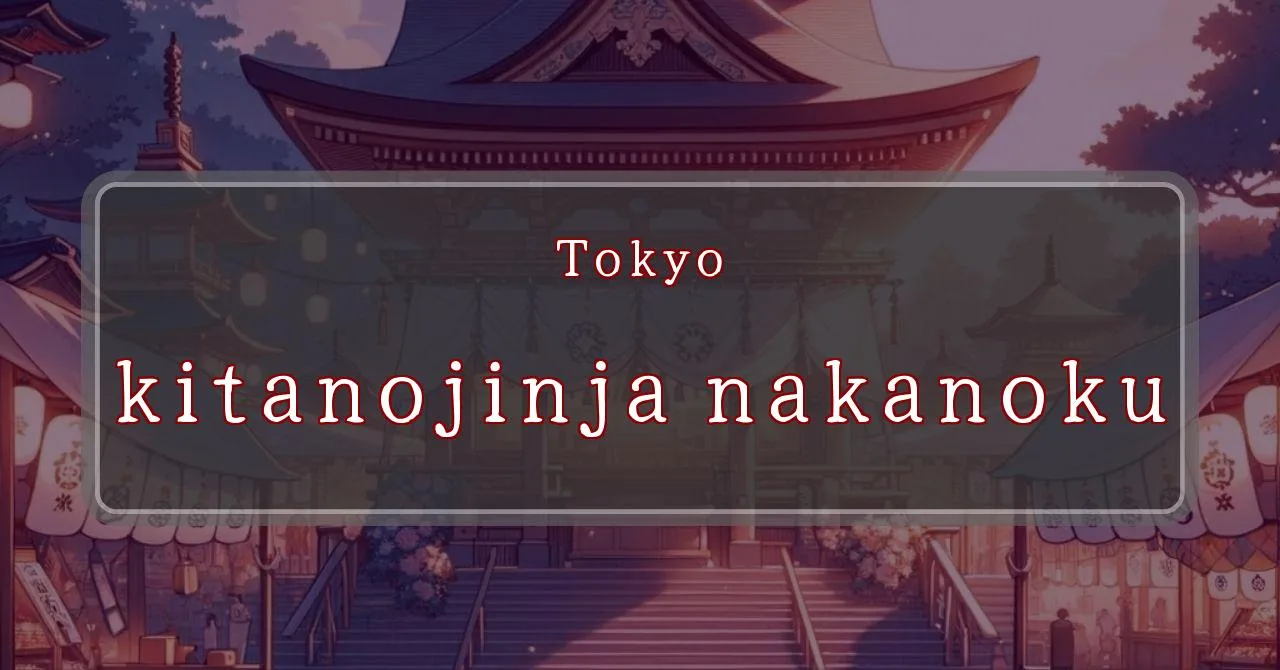Gleaming lanterns, vibrant parade, divine blessings
Basic Information
Kitano Shrine is a Shinto shrine located in Shinjuku Ward, Tokyo, Japan. It is dedicated to the deities Sugawara no Michizane and Ukemochi no Kami.
- Address: 4-14-3 Arai, Nakano-ku, Tokyo 165-0026
- Phone Number: 03-3388-0135
- Access: 10-minute walk from JR Chuo Line Nakano Station North Exit, or 8-minute walk from Seibu Shinjuku Line Shinjuku Yakushimae Station South Exit
- Festival Days: Third Saturday and Sunday of September
Main Events and Attractions of the Festival
The Kitano Shrine Festival is a lively and colorful event that attracts many visitors each year. The main events and attractions of the festival include:
Mikoshi Procession
One of the highlights of the festival is the mikoshi procession. Several mikoshi (portable shrines) are carried through the streets of Shinjuku Ward by teams of people. The mikoshi are decorated with colorful tapestries and ornaments, and they are accompanied by music and dancing.
Kagura Performance
Kagura is a traditional Japanese dance and music performance that is often performed at Shinto shrines. During the Kitano Shrine Festival, kagura performances are held in the shrine’s main hall. The performances are very beautiful and elaborate, and they tell stories from Japanese mythology.
Food Stalls
There are many food stalls set up at the festival, selling a variety of delicious Japanese food. Some of the most popular foods include yakitori (grilled chicken skewers), takoyaki (octopus balls), and taiyaki (fish-shaped cakes filled with sweet bean paste).
Games and Activities
There are also a number of games and activities for children at the festival. These include things like ring toss, beanbag toss, and goldfish scooping. There is also a petting zoo where children can interact with animals such as rabbits and goats.
Fireworks Display
The festival concludes with a spectacular fireworks display. The fireworks are launched from a nearby park, and they light up the night sky with their brilliant colors.
Blessings and Deities
Kitano Shrine is dedicated to two deities: Sugawara no Michizane and Ukemochi no Kami. Sugawara no Michizane was a Heian period scholar and politician who is revered as the god of learning and calligraphy. Ukemochi no Kami is the goddess of food and agriculture.
- Sugawara no Michizane: God of learning and calligraphy
- Ukemochi no Kami: Goddess of food and agriculture
Origin and History
The origins of Kitano Shrine are unclear, but it is believed to have been founded in the 16th century. The shrine was originally known as Tenmangu, and it was dedicated to Sugawara no Michizane. In the 17th century, the shrine was renamed Kitano Shrine and Ukemochi no Kami was added as a deity.
- Founded: 16th century
- Original name: Tenmangu
- Renamed: Kitano Shrine (17th century)
- Deities: Sugawara no Michizane and Ukemochi no Kami
Tips and Notes for Visitors
Here are some tips and notes for visitors to the Kitano Shrine Festival:
- Wear comfortable shoes: You will be doing a lot of walking during the festival.
- Bring cash: Many of the food and game stalls only accept cash.
- Arrive early: The festival gets very crowded, so it is best to arrive early to avoid the crowds.
- Be respectful: The Kitano Shrine Festival is a religious event, so please be respectful of the shrine and its customs.
Parking Information
There is limited parking available at the Kitano Shrine. If you are driving to the festival, it is best to arrive early to find a parking spot. There are also several public parking lots located near the shrine.
- Limited parking available at the shrine
- Arrive early to find a parking spot
- Public parking lots located near the shrine
Popular Stalls and Food Carts in Recent Years
| Type of Stall | Description |
|---|---|
| Takoyaki | A staple at Japanese festivals. Characterized by a crispy outside and a creamy inside. |
| Jaga Butter | A simple yet popular snack of hot potatoes lavishly topped with melted butter. |
| Baby Castella | Small castella cakes, sweet and fluffy treats enjoyed by children and adults alike. |
| Grilled Ayu with Salt | Fresh ayu fish grilled whole with salt, a savory taste of Japanese summer. |
| Shaapin | A unique gourmet item influenced by foreign cuisine, with a chewy skin wrapping the filling. |
| Okonomiyaki | A Japanese grilled dish where you often choose your own ingredients for a personalized flavor. |
| Cotton Candy | A fluffy, sweet snack that’s extremely popular with children. |
| Chocolate Banana | A banana coated in chocolate, a fun and visually appealing dessert. |
| Kushiyaki | Various types of ingredients skewered and grilled, an easy-to-enjoy snack. |
| Yakisoba | Fried noodles mixed with a special sauce, a fast food favorite in Japan. |



